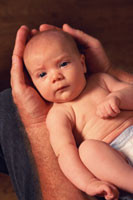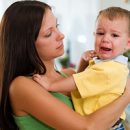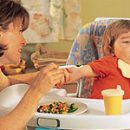Enteroviruses are pretty common. Especially often sick enterovirus infection children of younger. What are enteroviruses?
Content
Term «Enterovirus» Used as a generalizing name for a large number of viruses, which multiply in the gastrointestinal tract, why they are also called them «Intestinal viruses». Thus, one of the largest virus families - Picornavirus (Picornaviridae), whose name comes from Italian «Pico» - Little (this is one of the smallest viruses - about 30 nm) and RNa (RNA-ribonucleic acid - virus heredity substance). This family of viruses includes five childbirth: rinoviruses (Rhinovirus) - causative agents of a common cold; Cardioviruses (Cardiovirus) - pathogens of encephalomiocarditis; Aftovirus (APTHOVIRUS) - Pathways of FMD; Hepatovirus (Hepatovirus) - Hepatitis A and, Actually, Enterovirus (Enterovirus). Thus, enteroviruses (Enterovirus) is not only a generalizing concept, but also quite a specific kind of extensive family of intestinal viruses. Here and below using the term «Enterovirus», We will keep in mind the specific genus of viruses, which will be discussed.
Called disease
Enteroviruses are able to cause a person a number of diseases combined by common term enterovirus infections.
Kids are most susceptible to enteroviral infections.
The causative agent penetrates the body through the mucousness of the upper respiratory tract or the digestive tract. At the place of implementation, the virus accumulates and begins to multiply. As a rule (especially in adults), the infection proceeds quite easily and asymptomaticly, or is accompanied by signs of light ailment - fever, headache, gendering, pain in the stomach, photophobia (bright light intolerance), sometimes it can happen. However, when penetrating blood (the so-called «Virushemia»), enteroviruses are spread throughout the body and then they are able to affect various organs, causing serious diseases.
Media and distribution
Enteroviruses are widely distributed in nature and avoid a collision with them almost impossible. At the same time, it is not at all necessary that all people whose organism penetrated viruses of this type. Rather, on the contrary - they can become virosters, without feeling any signs of illness, or moved quickly and in lightly. Enteroviruses who infect people are not found in animals and vice versa, enteroviruses of domestic or wild animals are not transmitted to man.
Therefore, infection by enteroviruses is possible either indirectly - a fecal-oral way (that is, through contaminated food and water), or by a domestic way with direct contact with the virus fitness or through the domain of household items. The airborne-drip mechanism of transmission of enteroviruses is quite important (after all, they are quite close relatives of cold weather viruses).
Danger for man
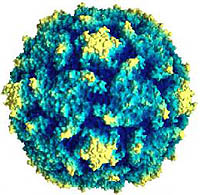 As already mentioned, enteroviruses are quite widespread and chance «meet» with them very great. The probability of disease enterovirus infections is inversely proportional to the age of a person. The children of the first year of life are most susceptible to these infections. The likelihood of illness and for children up to 10 years. In adults, the likelihood of enecotive diseases of Mala.
As already mentioned, enteroviruses are quite widespread and chance «meet» with them very great. The probability of disease enterovirus infections is inversely proportional to the age of a person. The children of the first year of life are most susceptible to these infections. The likelihood of illness and for children up to 10 years. In adults, the likelihood of enecotive diseases of Mala.
Fortunately, most enterovirus infections proceed quite easily and does not lead to serious consequences (no more than an ordinary cold). Moreover, not every case of infection leads to a disease.
Enterovirus infections occur throughout the year, but have a peak of morbidity in the period from June to October (for countries with temperate climates).
The method of combating these viruses is essentially one - observance of hygiene («Wash your hands before eating!»).
Diarrhea with enterovirus infection
The beginning of the disease is acute, diarrhea is preceded by nausea, in severe cases - vomiting. General infectilation (headaches, temperature increases, muscle pain) expressed the weak abdominal pain for viral enteritis are not typical. First, the chair has a cascidious feasible character, but then it becomes more and more liquid and watery. It happens so because the swelling and inflammation of the small intestine caused by the virus leads to violations of secretion and reverse water absorption, rich in sodium and potassium salts. Liquid lost with diarrhea contains little protein, but many of these valuable salts. Luxury losses can be up to 1 l per hour.
The thick gauge does not suffer in viral diarrhea, so leukocytes are not detected in the chair. The main reason requiring immediate treatment is the threatening loss of liquid and salts. Viral diarrhea lasts in adults 1-3 days, in children 2 times longer, so it is necessary to immediately start replacing the lost fluid.
Treatment of enterovirus infection
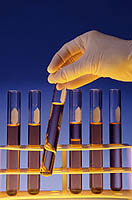 Treatment is aimed at eliminating the main symptoms and complaints (diarrhea, vomiting, temperature rise, dehydration). Most often such patients are treated at home, as infectious is not very high. This disease rarely ends with death and severe complications.
Treatment is aimed at eliminating the main symptoms and complaints (diarrhea, vomiting, temperature rise, dehydration). Most often such patients are treated at home, as infectious is not very high. This disease rarely ends with death and severe complications.
Diet plays a very important role. Diet:
- Foods exclude substances enhancing peristaltics
- Di - and Monosahara are excluded (milk). Equality products are shown, since there is an intestine dysbiosis.
- Food must have mechanical gentle properties (without coarse fiber) as in the intestine there is inflammation.
- Limiting fats, since increased consumption of fat will lead to increased fermentation processes, rotten decay, increasing intoxication and diarrhea.
- With rotary processes, there are better baked apples, they better absorb harmful substances (are enterosorbent).
Water-electrolyte disorders can lead to dehydration. To combat this, mixtures of oral (drinking) solutions of salts (citrustroxoran) are used, which are used independently of the causative agent of diarrhea diseases. Citroglucosoran contains a table salt, potassium chloride, sodium citrate and 20 g of glucose. This set is very effective. Powder is bred in 1 liter of drinking water. The concentration of salts is created that are usually lost, because isotonic dehydration is present with intestinal infections. Suction is ensured in full, as 2% glucose solution enhances suction.
Easy degree of dehydration (liquid loss of at least 3%) - clinically manifested by thirst. Prevention lies in the fact that after each defecation adults it is necessary to drink 200 ml of this solution, and a child up to 2 years old - 50-100 ml, depending on body weight (another scheme - up to 50 ml per 1 kg of body weight by 4 hours of treatment, Next supporting treatment.
Severe dehydration (dehydration) is clinically manifested by convulsions, shortness of breath, rapid heartbeat, reduced pressure, that is, almost a shock condition. Luxury losses are 110-120 ml per kg of mass. Urgent restoration of losses, starting from intravenous loungeing fluid loss (rehydration) (for 4 hours), then go to oral (drink) rehydration (replenishment of fluid volume).



